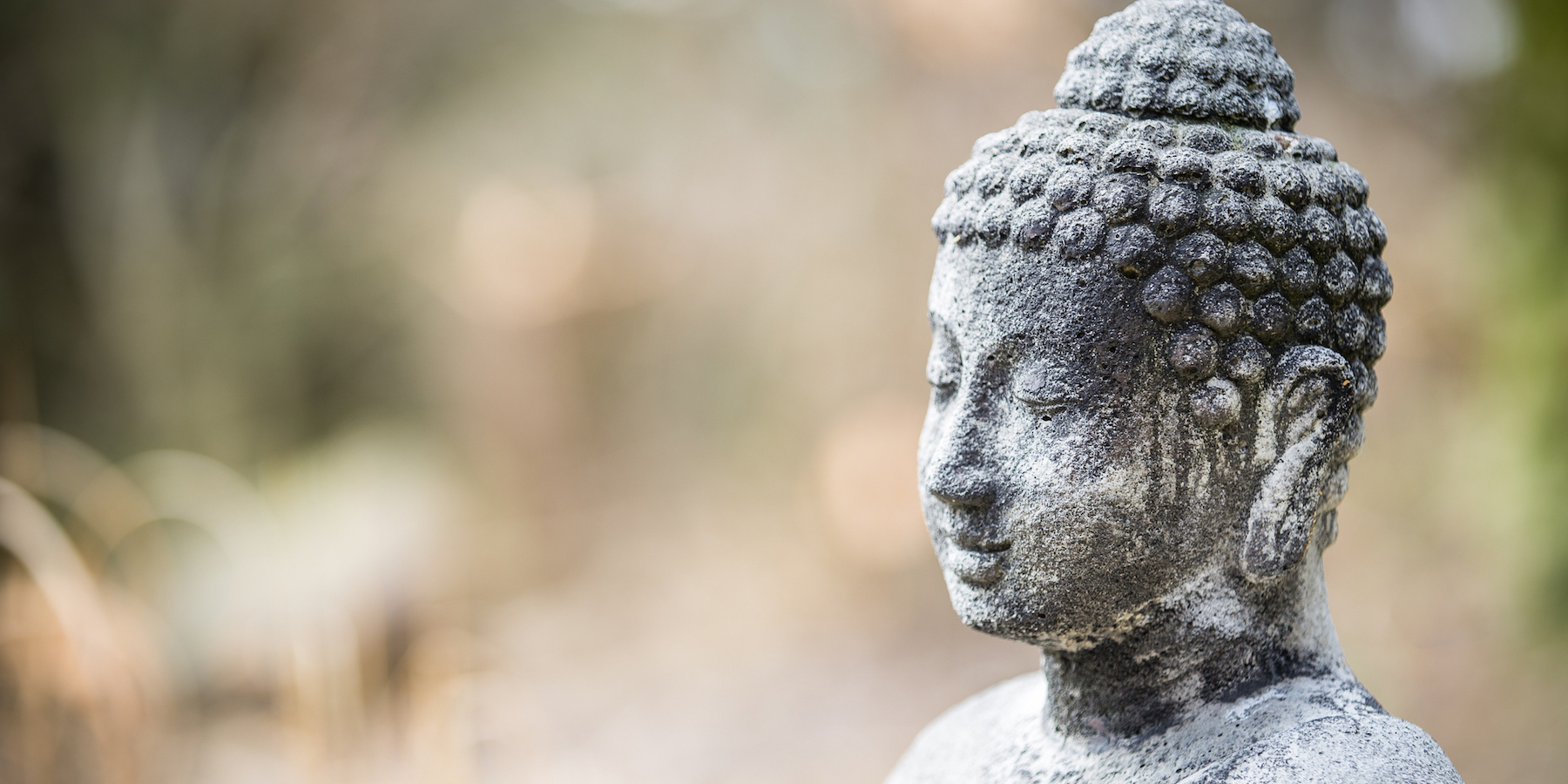Insight and Vipassana meditation are ancient practices that guide us toward embracing mindfulness through tradition. Vipassana has been handed down from Buddha to guiding teachers as part of the dharma, but you do not have to be a Buddhist to practice this meditation and receive its benefits. Rooted in the Vipassana tradition, our insight meditation offers a pathway to profound self-awareness and inner peace.
By observing our thoughts and emotions without judgment, we unlock a deeper understanding of ourselves and the world around us. Insight Timer’s guide on the basics of meditation is a perfect starting point for those new to this transformative practice.
Key takeaways:
- Insight meditation, also known as Vipassana, is a practice focused on developing mindfulness and understanding the true nature of reality.
- It differs from other meditation practices by emphasizing observation and awareness of thoughts, sensations, and emotions.
- Regular practice can lead to enhanced mindfulness, reduced stress, and a deeper sense of inner peace.
Get started with meditation expert Tara Brach, Ph.D. and her Basic Guided Insight and Vipassana Meditation.
What are insight meditation and vipassana?
Insight meditation is deeply intertwined with vipassana, a type of Buddhist meditation that emphasizes direct, experiential understanding of the mind. This practice encourages us to observe our present experiences — thoughts, feelings, sensations — without clinging to them.
The insight aspect of meditation serves to deconstruct the problems we may create out of misunderstanding and misperception. Insight helps us see and understand our selves, life and the world realistically. With insight meditation we ask the questions “what” is happening and “how” is it happening.
It’s more than just a technique; it’s a path to seeing things as they truly are, leading to genuine wisdom and liberation.
What are the 5 rules of vipassana?
The five rules, or precepts, of vipassana are moral guidelines to support meditation practice:
- abstaining from harming living beings
- stealing
- sexual misconduct
- lying
- Intoxication
Some of these rules stem from and correlate closely with the guidance of the Buddha on The Five Hindrances. For more help understanding some basic elements of Buddhism, check out our article on dukkha and The Four Noble Truths.
How to practice insight meditation and vipassana
To make our insight meditation and vipassana practice more impactful, set clear intentions before each session. This helps direct our focus and reinforces the purpose of our meditation.
Be patient with yourself — meditation is a skill that develops over time, not overnight.
Lastly, engage with a meditation community or meditation center, either online or in-person, or join an insight meditation society or vipassana retreat center. Sharing experiences and tips with others can offer new perspectives and motivate you to keep practicing. These steps, combined with the foundation laid out earlier, create a robust framework for deepening your meditation practice.
Finding a meditation community close to you or one that works with your schedule can be challenging. Melissa Sabino holds a weekly online meditation session which you can check out here.
The 4 foundations of mindfulness for insight meditation
There are many different styles of insight meditation and some forms emphasize discursive thinking or focused reflection. Generally, however, in Theravada Buddhism the four establishments or foundations of mindfulness are considered as synonymous with insight meditation. With this practice the realizations of the four truths arise from the direct experience of tracking and seeing along with experience using mindfulness.
Find your new favorite track! Browse thousands of free mindfulness meditations on Insight Timer.
The four foundations of mindfulness are:
- Body: posture, actions, physical sensations and breath
- Feeling: the hedonic qualities of pleasantness, unpleasantness or neither
- Heart-mind: moods, emotions and states of mind in varying manifestations of greed, ignorance and hatred and their opposites
- Phenomena: emotional, mental and behavioral patterns considered as either wholesome or unwholesome.
The phenomena of mindfulness also includes a form of intelligence that serves to reduce and release the psychological patterns that perpetuate dukkha as well as foster psychological patterns that are helpful and liberating.
The four foundations of mindfulness encompass all possible human experiences, including Nirvana.
Unlike serenity meditation that emphasizes paying focussed attention to a single object, with insight meditation the objects of attention and momentary concentration can vary.
Turn into the heart-mind and experience serenity and insight with these guided meditations by Malcolm Huxter:
- Tuning Into The Heartmind Malcolm Huxter 12:39
- Mindfulness Of Sound And Thought Malcolm Huxter 8:17
- Well Being At A Special Place Malcolm Huxter 14:53
What are the benefits of insight meditation?
Insight meditation can be a real game-changer in life. Imagine feeling less tangled up in worries and more able to handle stress — that’s what this practice does. It’s training our mind to help us stay calm and bounce back quicker when things get tough. Plus, it sharpens our ability to pay attention. Whether you’re having a chat with a friend or working on a project, you’ll be more in the zone.
But the benefits aren’t limited to that alone. Insight meditation can make you kinder — to yourself and to others. In Buddhism, this kindness is called metta, which specifically translates to loving-kindness. This loving-kindness makes for smoother interactions and stronger connections with the people around us.
Adding to that, there is a deep peace that starts to grow inside you. It’s not just about feeling relaxed — it’s a sturdy, quiet happiness that sticks around, even on busy days or when life throws a curveball.
So, by making insight and vipassana meditation a regular part of our day, we’re not just giving ourselves a time-out. We’re setting the stage for a more mindful, peaceful, and connected life.
Finding it hard to be observant of the things happening in your life? This 5-star rated guided meditation will give you a short glimpse into how insight meditation can help you.

Focus on breath awareness for optimal insight and vipassana practice
Breath awareness is a cornerstone of insight and vipassana meditation, serving as a powerful tool to anchor the mind in the present moment.
By focusing on the breath, especially by incorporating the concept of prana, we learn to observe our thoughts and emotions without attachment, fostering a deeper sense of mindfulness and concentration. This practice not only helps in developing a calm and centered mind but also enhances one’s ability to respond to life’s challenges with equanimity.
New to prana? Becca LaPole gives a glimpse into how prana can benefit you with this guided prana meditation.
Develop attention and focus through insight and vipassana
Insight and vipassana meditation emphasize the cultivation of attention and focus, key skills for achieving mental clarity and insight into the nature of existence. Techniques such as noting and labeling thoughts and sensations can be particularly effective in training the mind to stay present, reducing the tendency toward distraction.
As we meditate and develop these skills, we’ll find ourselves more immersed in our meditation sessions, with benefits that extend into daily life.
Why sitting is important during insight meditation and vipassana
The practice of sitting meditation is central to Vipassana and insight meditation. A proper sitting posture aligns the body and mind, facilitating deeper concentration and mindfulness. It helps us maintain alertness while being relaxed, allowing for sustained observation of the breath, thoughts, and sensations.
Insight Timer’s resources on managing back pain during meditation can help optimize your sitting posture for a more comfortable and effective practice.
The role of walking meditation in insight meditation and vipassana
While many people will practice vipassana while sitting, walking meditation may enhance the insight/vipassana tradition by adding a dynamic layer to mindfulness practices. It shifts our focus to our body’s movements, creating a meditation in motion that can be especially beneficial for those who struggle with the stillness of sitting meditation. This method enriches the meditation experience by integrating mindfulness into daily routines, allowing for a seamless blend of meditation and movement.
Walking meditation not only diversifies practice but also strengthens mindfulness, making every step a moment of connection to the present. It’s particularly useful for incorporating mindfulness into the rhythm of everyday life, turning ordinary activities into moments of meditation.
Additionally, this practice allows for greater flexibility in one’s meditation routine, making mindfulness more accessible and practical. Walking meditation serves as a gentle reminder that mindfulness isn’t confined to a cushion but is a state of being that can permeate all aspects of life.
Walking meditations don’t need to take up much of your time. Join Chelsea Pottinger in this 12-minute walking meditation to start, continue, or end your day.

Enhancing insight and mindfulness: beyond the cushion
For those looking to deepen their insight meditation practice, exploring advanced techniques can unlock new levels of mindfulness and understanding. Practices such as intensive meditation retreats, deep concentration exercises, and the exploration of complex mindfulness techniques allow experienced meditators to explore the depths of their consciousness. These practices not only enhance our meditation experience but also foster a profound connection with the inner self, leading to significant personal growth.
For those interested in deepening their practice further, exploring guided meditations by experts like Jack Kornfield can be incredibly beneficial.
The progress of insight: tracking spiritual growth
Monitoring your journey through insight meditation can be both inspiring and enlightening. Tools and apps, like Insight Timer, provide invaluable resources for tracking your meditation habits, progress, and subtle shifts in your mental and emotional landscape.
By reflecting on your growth, you gain insights into the patterns of your mind, helping you tailor your practice to better suit your evolving needs and deepen your understanding of the meditation path.
One step at a time
Embarking on an insight meditation journey is more than a practice — it’s a commitment to enriching your life with mindfulness and personal growth. At Insight Timer, we’re here to support you every step of the way, providing a wealth of resources and a community eager to share their journey with you. By maintaining a routine, embracing curiosity, and being open to new learnings, you’ll discover the transformative power of insight meditation. Together, let’s journey towards a deeper understanding and a more fulfilling life.
Frequently Asked Questions about insight meditation (FAQs)
What is the difference between mindfulness meditation and insight meditation?
Mindfulness meditation focuses on being present and aware of the moment without judgment. Insight meditation, while using mindfulness, goes further to understand the nature of those experiences to gain deeper wisdom.
What are the three stages of insight?
The three stages of insight in meditation are:
- recognition of one’s mental and physical processes
- understanding the impermanent nature of these processes
- the realization of non-attachment to these processes
What is the difference between calm meditation and insight meditation?
Calm meditation, or samatha, is about quieting the mind and finding inner peace. Insight meditation, or vipassana, is about observing thoughts and sensations to gain a deeper understanding of reality.
What are the side effects of insight meditation?
While often beneficial, insight meditation can sometimes lead to uncomfortable experiences, such as heightened emotions or a sense of disorientation, as one confronts deeper truths about oneself.
What type of Buddhism is Insight meditation?
Insight meditation is associated with Theravada Buddhism, which emphasizes the oldest teachings of the Buddha and dharma and the practice of Vipassana or insight meditation to achieve enlightenment.
Are you taking proper care of your mind?
Proper mental care involves regular meditation, mindful living, and self-reflection. Insight meditation is a tool that helps in nurturing and maintaining mental well-being.
How do I start practicing insight meditation as a beginner?
Begin by finding a quiet space, sitting comfortably, and focusing on your breath. Observe your thoughts without judgment and gently bring your attention back to your breath when it wanders.
How do I begin practicing insight meditation, and what are the steps involved?
To begin, set aside a few minutes each day for meditation, find a calm environment, and sit with a straight yet relaxed posture. Focus on your breath, observe sensations and thoughts, and maintain a gentle, non-judgmental awareness.
What are the benefits of practicing insight meditation regularly?
Regular insight meditation can reduce stress, increase self-awareness, improve emotional regulation, and lead to loving-kindness — greater compassion and empathy for oneself and others.








